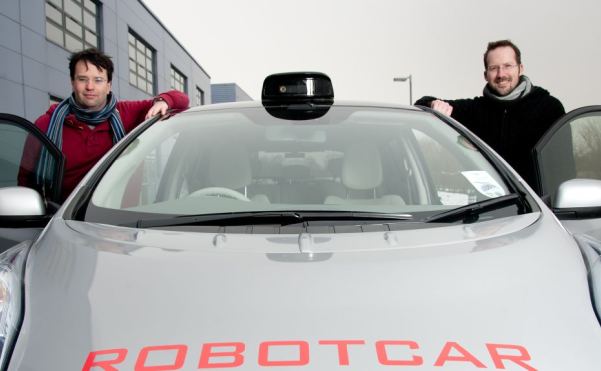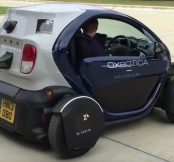UK’s Oxbotica to Rival Tesla and Google in Driverless Cars
2016-08-03 15:31:55
Oxbotica, a spin out firm from the University of Oxford developed a system to help it come up with a driverless car. The software, Selenium uses data captured from cameras, radar systems and laser scanners to help the car in navigation. Paul Newman, co-founder of Oxbotica admits that developing a streets driverless car is just the beginning, since the firm is keen on developing robots, warehouse forklift and vehicles that could be used in public transport.
Understanding the Selenium Software
Oxbotica has already received national acclamation for its efforts to innovate a number of autonomous vehicle navigation. Selenium is nothing less, enabling vehicles to offer driverless features in urban and pedestrian used areas around the UK. This is in an effort to combat the challenges that come with the use of public transport system.
In addition to using sensors, radars and visual cameras, Selenium heavily relies on a number of algorithms its captures from these components. This makes the vehicle master the common routes along which the owners use therefore analysing and reacting according to how a human driver would react in a different traffic scenarios. Ingmar Posner, a cofounder of Oxbotica says that through this routes and driver reactions, the software comes in handy in ordering the much needed autonomy.
Selenium performs two vital functions;
Localise the vehicle in space.
Perceive what is happening around the car.
Through these two functions, a central scanner is able to determine how the car should move on the road. Additionally, the sensors will provide the vehicle with vital information about the route and what is laid on the road surface. However, for forklifts, Newman suggests that sensors will not be necessary.
The sensors will also help in storing vital information to the car’s data system. This is because, as expected, the autonomous vehicle will be used in all types of weather. The sensors will localise and store data on details of the surroundings as they change with seasons. This localises the wider world in one single system while the high resolution lasers provide more accurate autonomous capability, in low visibility conditions when the cameras become unreliable.
Selenium offers prior knowledge to the driver while it continues to learn from the driver’s driving behaviour. For example, the software will learn from the driver what type of surface to stick to in order to drive safely while also relying on the driver to guide the vehicle through traffic lights or signals. In the long run, the system will be able to assert the much needed confidence in the car when it comes to driverless acceleration, braking or steering.
Further Test Settings
Oxbotica’s system is already being tested in GATEway Project in Greenwich, London and 40 LUTYZ Pathfinder driverless pods in Milton Keynes. This tests are meant to identify the challenges of using Selenium in public transport system. Hopefully, the success of this test will place the UK in the global map when it comes to society changing technology.
But Why the UK?
Already, a number of driverless vehicles have been developed and launched in the US, led by Tesla and Google. However, in the UK, there seems to be a favourable atmosphere for such technology. The UK has aways been a leader in Technologies from the telephone and internet to the latest chips for Apple. The UK government has also decided to fund much of the driverless projects. In addition, anyone with a driverless car or autonomous vehicles can test it on UK roads without the need for a special permit. The vehicle should be roadworthy in order to operate in this regime that allows innovation and technology to flourish. The UK has also set autonomous infrastructure in place; machine intelligence, mapping, cyber security, data science and human factors research well set. All of this are promoting more and more firms conduct their autonomous research in this technological advanced country.
Existing Competitors
Much of the autonomous technology is based in the US with Tesla and Google at the forefront of launching this system. However, Tesla’s autonomous technology is facing challenges from its ability to meet the strict safety measures put in place by the US government hence casting shadows on the firm’s ability to incorporate driverless technology in the soon to come Model 3. Nissan has already announced its driverless technology, ProPilot driver aid indicating that the road towards attaining this automotive autonomy will not be long.
Reported By
SteveyG
Guest Editor









